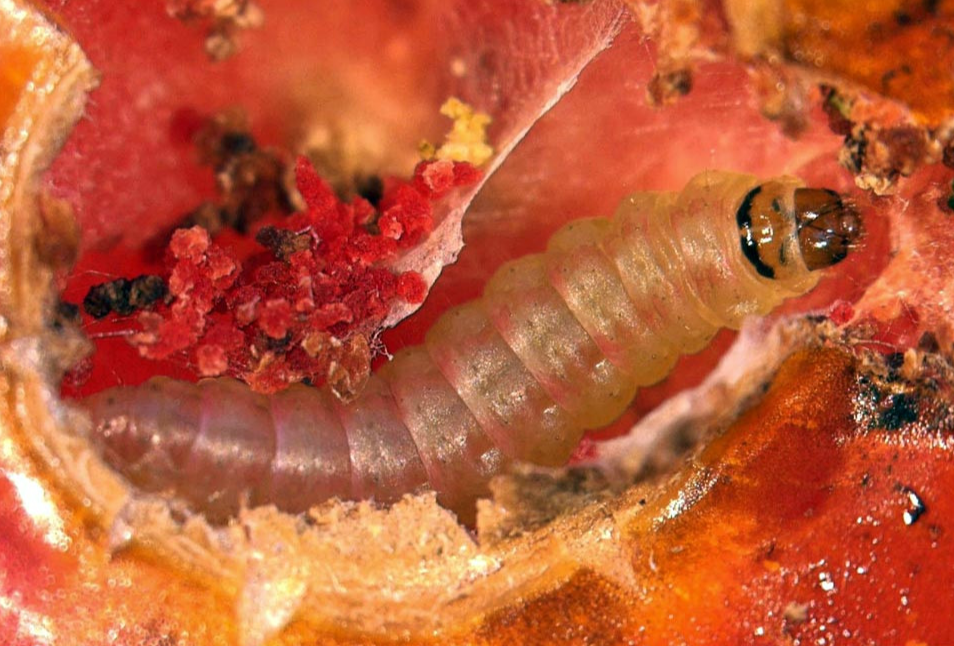Pest management advice in person, in print, on mobile…what next?
If you take a look at a Plantwise pest management decision guide (PMDG) on the Knowledge Bank, it probably won’t look much different to how it looked before. However, under the covers, this PDF has been created in a completely different way to before. This is because we are now storing each part of the PMDG…
Factsheet of the month: September 2015 – Control of Black Rot in Cabbage
Black rot is considered the most important disease of crucifers across the world and can attack its host at any stage of growth. Cauliflower and cabbage are the most readily affected crucifer hosts and suffer significant yield loss as a result of the disease. On cabbage, black rot causes yellow to brown V-shaped lesions to…
Plantwise publishes its 1000th Factsheet for Farmers!
Today, we are celebrating the publication of the 1000th Plantwise Factsheet for Farmers (PFFFs) on the Plantwise knowledge bank! PFFFs are written by trained partners in Plantwise countries around the world. Each factsheet provides information on how to recognise the problem, some background details about the problem and offers effective management advice to enable the…
Factsheet of the month: August 2015 – Sprays against Tuta tomato leaf miner
In recent years, Tuta absoluta has gained a reputation for being one of the most destructive pests of tomato and can cause losses of 80-100% in the field if left unmanaged. Tanzania are feeling the effects of the yield reduction with a 375% increase in the cost of tomatoes in the past 6 months. A carton of…
Factsheet of the month: July 2015 – Prevention of powdery mildew on mango using cultural methods
The use of pesticides in Ethiopia has been increasing in recent years but it is thought that due to a lack of training and awareness, these chemicals are often being used unsafely and excessively. Many groups in Ethiopia are therefore raising awareness of Integrated Pest Management (IPM) in which control methods are selected based on…
Factsheet of the month: June 2015 – Conservation of natural enemies
Friday May 22nd was 2015’s International Day for Biological Diversity. This year’s theme was ‘Biodiversity for Sustainable Development’ which reflected the importance of biodiversity in achieving the Sustainable Development Goals. Biodiversity is key in agriculture and it both promotes and is promoted by sustainable methods. Farmers rely on a range of different species for the success of their…
Factsheet of the month: May 2015 – Tolerant bean varieties against stem maggots
The saying “prevention is better than cure” is no more true than when applied to agriculture. Taking precautionary measures against common pests can increase farmer income by investing a small amount of money into minimising crop losses, ensuring a high yield. Preventative measures can include correct land preparation, physical barriers, field hygiene and cultivation of tolerant…
Mocking up the Plantwise Knowledge Bank
This blog post is different to those you might usually read on the Plantwise blog. It is a little tour behind the scenes of the Plantwise Knowledge Bank, telling you about how we design features for our website and mobile. Let us know if you’re interested in hearing more about how we develop the Knowledge…
Factsheet of the month: April 2015 – Trapping banana weevils
According to the International Institute of Tropical Agriculture (IITA), Tanzania and Uganda, who produce almost half of all bananas in Africa, are only achieving 9% of their expected yield. This year sees the start of a 5-year project to develop high-yielding, pest resistant banana hybrids. Rony Swennen, the project’s leader, says that he hopes this…
Factsheet of the month: March 2015 – Tomato yellow leaf curl management
A recent plant protection conference in Hanoi highlighted dangerous levels of pesticide use in agriculture in Vietnam. The head of Vietnam’s Plant Protection Department, Nguyen Xuan Hong, announced that a 5-year Integrated Pest Management (IPM) project had been approved by the Ministry of Agriculture and Rural Development. IPM will be important in reducing both costs to…


